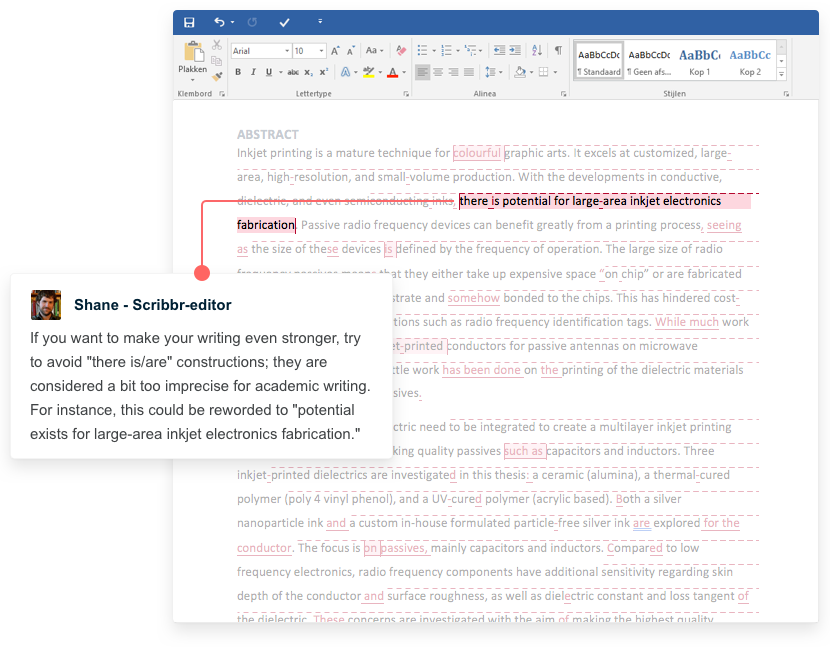Purpose and structure of an advisory report
Some dissertations include a separate advisory report that is specifically designed for a company or organization that wants to act on the author’s advice.
An advisory report should be centered on opinions that are well substantiated – which means it’s more than just the list of recommendations that you include in the main body of your dissertation. You also need to weigh the recommendations against each other and elaborate the consequences that each will have for your “client.”
When should you create a separate advisory report?
The advantage of having a separate advisory report is that readers can quickly learn about your opinions without having to read the whole dissertation. It’s the best option when you want to deliver concrete recommendations and an evaluation thereof to your client (especially if you used an advisory research question).
Structure of an advisory report
As different entities have different requirements for advisory reports, it’s always good to find out what your client specifically wants. Nonetheless, all advisory reports tend to have a similar basic structure.
| Section | Description | Length |
|---|---|---|
| Title page | The title page should be professional and attractive, just like the title page of your dissertation (although it does not contain as many details). It should include the following information:
|
One A4 page |
| Executive summary (not required if the report is short) | This summary provides the client with an overview of your recommendations (and justifications) in as few words as possible. | half or one A4 page |
| Table of contents | Here you can follow the same basic rules that you used in making a table of contents for your dissertation. | One A4 page |
| Introduction: the problem/issue being adressed | The introduction includes further information on the problem (such as its background and context), the main research question explored and the study’s parameters. | No more than one A4 page |
| Research design | This section presents a summary of your research design. Readers who want more information can be directed to your dissertation (which you cite include as a source). | half or one A4 page |
| Alternative measures (or solutions) | This section is the core of the report, but it’s also the most difficult to write. It outlines possible steps and then weighs them against each other against the backdrop of any constraints that must be faced. Using your research as the foundation, you also need to briefly substantiate each measure. In doing so, answer the following questions:
|
No more than two or three A4 pages |
| Conclusion | The conclusion identifies your ultimate recommendation and explains the justification for your choice. It should provide the following:
|
No more than one A4 page |
| Sources | This section is a list of the sources you used in preparing the advisory report. Cite any literature or background materials you consulted (including your thesis). | No more than one A4 page |
Tips for writing your advisory report
- At the beginning of your research, decide with your client whether you will provide a separate advisory report. If yes, seek clarification on the report’s purpose and its intended readers.
- Take your client’s expectations regarding design and content into consideration. The structure suggested above is a good starting place, but also look at similar reports prepared for or by your client to familiarize yourself in advance with specific requirements or styles. Make sure you also know how long the report should be, when it must be submitted, how far the recommendations should be developed and any constraints that must be considered.
- For each recommendation, address the following questions (which you should adjust on the basis of discussions with your client):
- What will the measure contribute to solving the problem or issue? How soon?
- What are the measure’s pros and cons?
- Which of the presented measures are the best? In what order?
- What would implementation require (in terms of money, time, people and the organization)?
- Be succinct and brief. The reader should be able to understand the information you are presenting quite quickly.
- Ask your client and other stakeholders for feedback on a draft of your report before you finalize it.
Sources in this article
We strongly encourage students to use sources in their work. You can cite our article (APA Style) or take a deep dive into the articles below.
This Scribbr articleSwaen, B. (April 1, 2019). Purpose and structure of an advisory report. Scribbr. Retrieved October 17, 2022, from https://www.scribbr.com/dissertation/purpose-structure-advisory-report/
